Tucows launched our Tiered Access Compliance and Operations (TACO) platform nearly five years ago in May 2018. Since then, we’ve processed thousands of disclosure requests, supported hundreds of requestors with their legitimate needs for the disclosure of domain registration data, and made ongoing improvements to our TACO platform (the most recent of which are discussed here).
While request and disclosure rates have varied over the years, our commitment to using this platform to manage requests and listening to feedback on how best to improve the TACO platform has remained consistent.
There’s a similar conversation happening within the ICANN Community: is there a need for a central system to manage domain registration data disclosure requests, and does the cost to build and operate such a system balance out with the benefits it offers to users? In the leadup to ICANN76, we’re thinking back to the Whois Disclosure System (WDS) discussed in our ICANN75 roundup blog post, which has just been approved by the ICANN Board and is estimated to take about a year to set up. This WDS would be a central intake point for disclosure requests, running for at most two years, and allowing ICANN to track request and response data very similarly to how we publish here. This data would then inform the ICANN Board’s decision about whether to move forward with a long-term centralized disclosure request system.
We hope that our discussions here of the pitfalls and successes of such a system are helpful to people considering building a similar system and are at their disposal to discuss at any time.
While we await that decision, we’ll continue to manage registration data disclosure requests for domains registered with us via our TACO platform, allowing access to those with a legitimate interest in the data through a simple and secure interface.
Now, let’s look at the numbers.
Tiered Access statistics, September – December 2022
The total number of Tiered Access disclosure requests received since we began tracking in January 2018 is now 5,152. Below you’ll find the outcome of these requests and how that has changed over time, starting with our new period (September to December 2022).
Data disclosure request outcomes: New Period (September – December 2022)
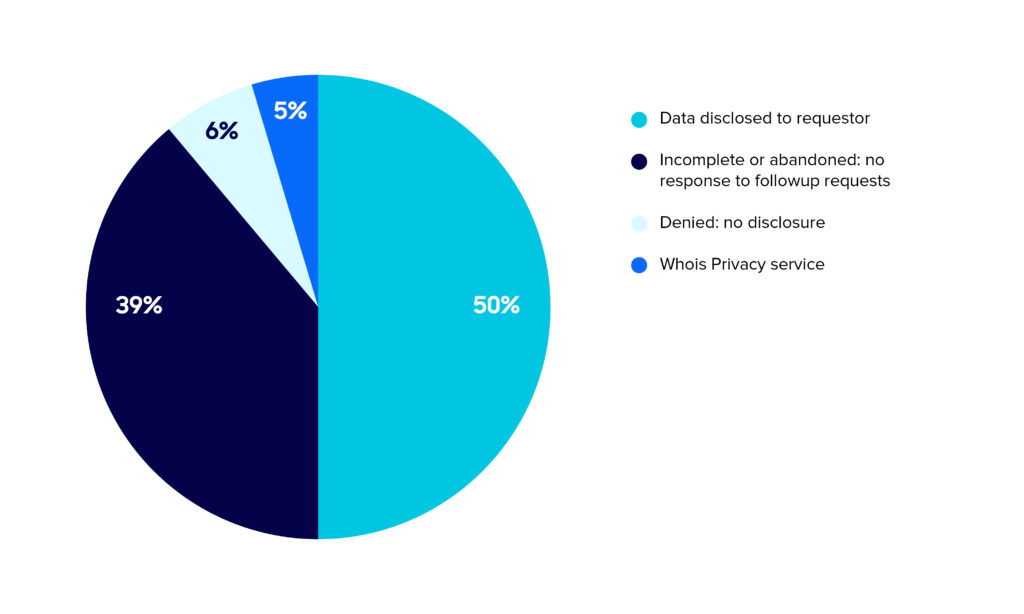
Request outcomes, compared:
The disclosure rate for the current reporting period is lower than previous recent periods, though still higher than the first years of TACO’s operation. We want to note that incomplete or abandoned requests continued to increase for the rest of 2022, while the denial rate is the lowest it’s been since 2018.
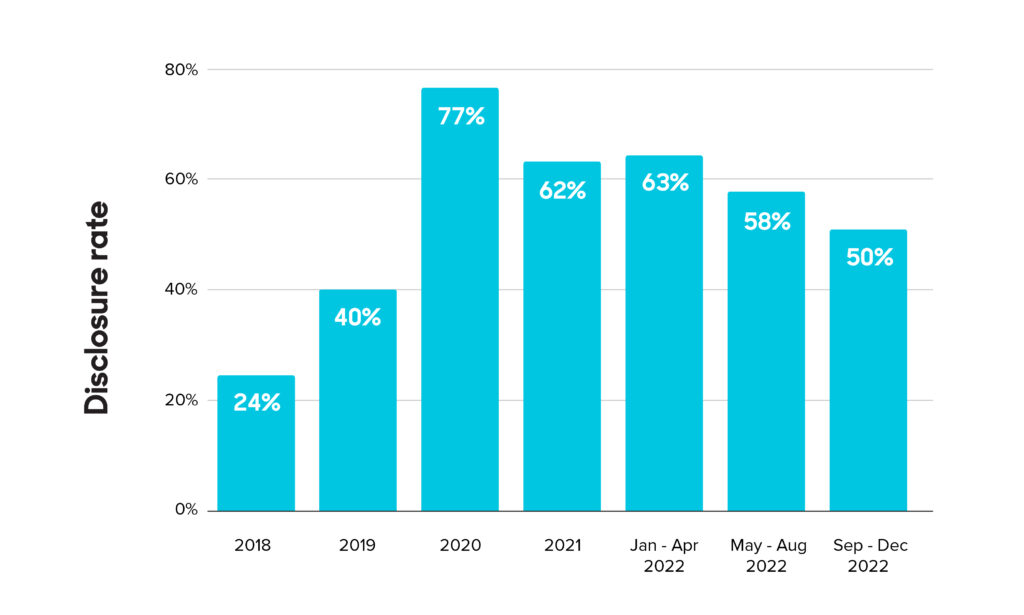
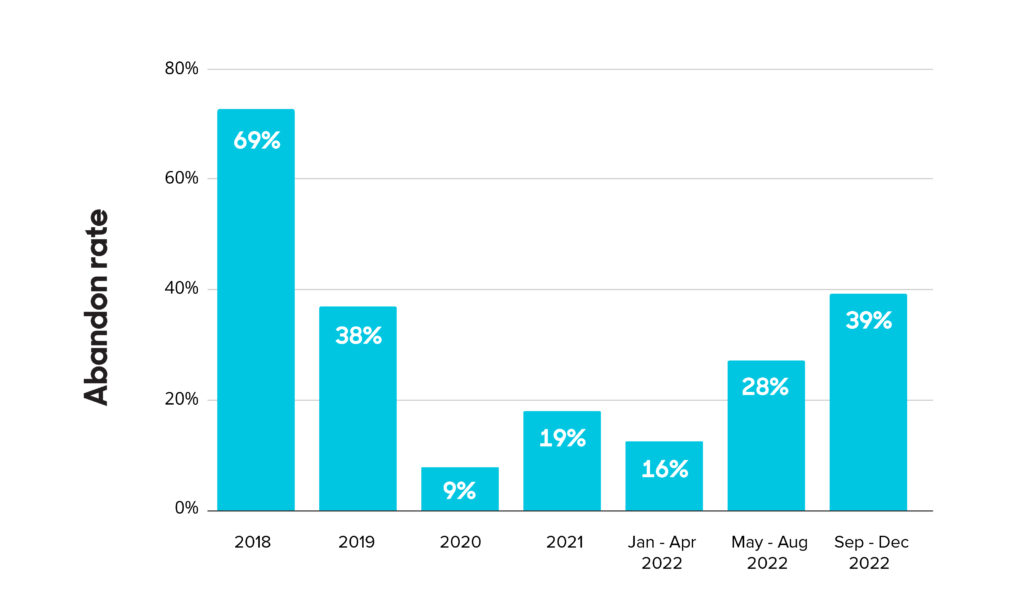
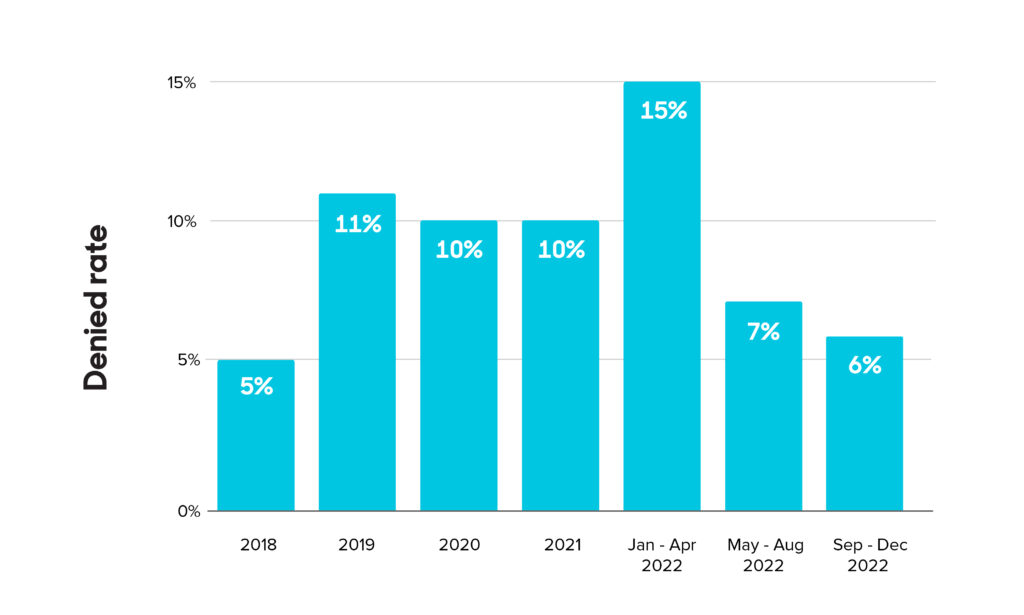
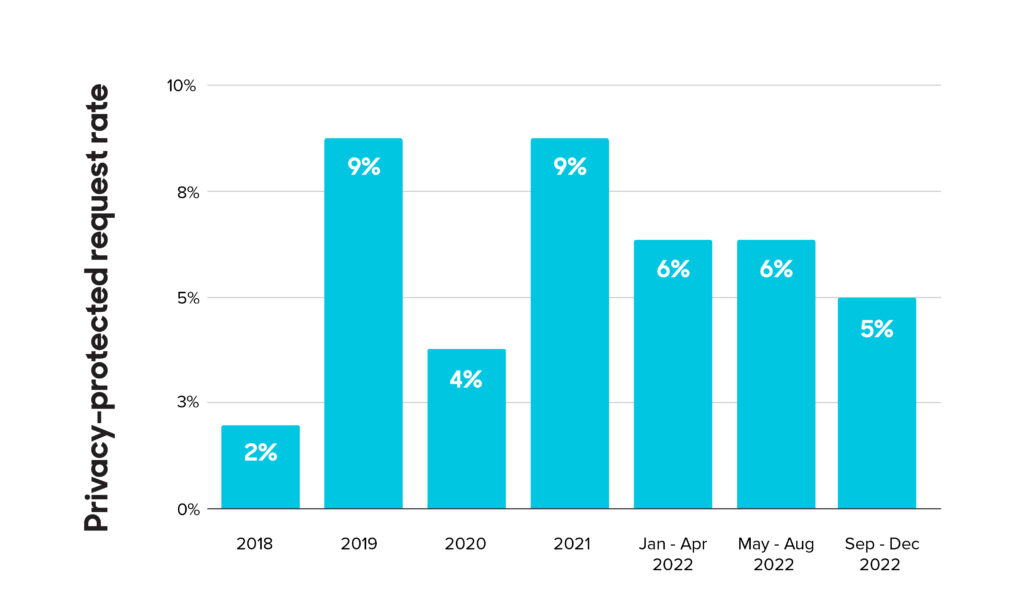
Requests by requestor category
Historically, commercial litigators have submitted the majority of domain data disclosure requests, while requests from law enforcement (LEA) made up a smaller but steadily increasing portion of the total. 2022 saw a change to this pattern. The earliest part of the year (January to April) saw fewer commercial litigation requests—54% of total, the lowest they’ve ever been. This category increased to 69% of total for May through August, still lower than ever before, and then dropped down even further to only 34% for the current reporting period (September to December). This resulted in a higher proportion of LEA requests than usual: they accounted for 60% of the total for this period, their previous record being 37%.
Requests by category: new period (Sept-Dec 2022)
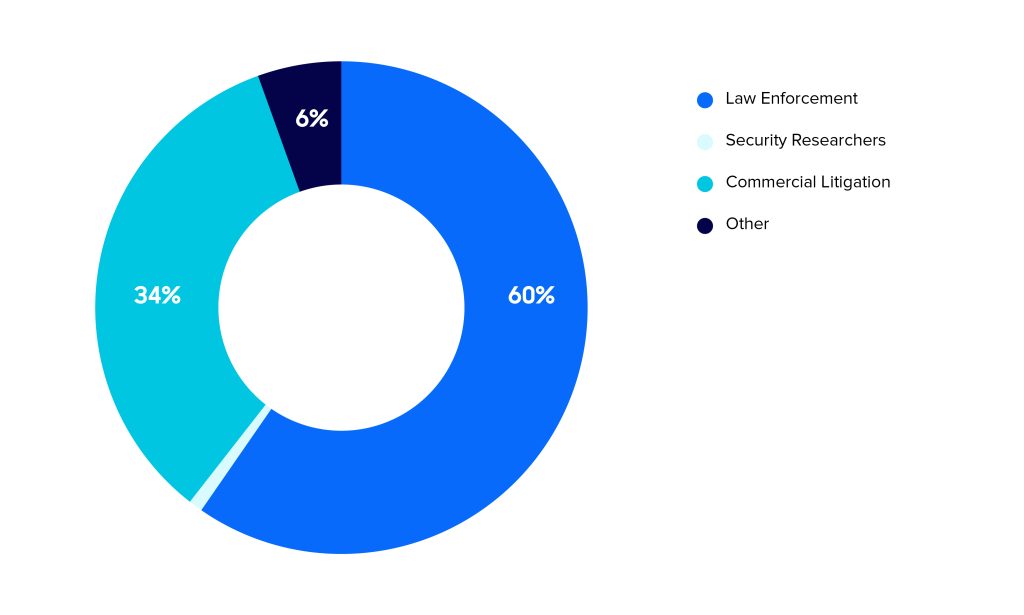
Requests by category since 2018
As we can see when comparing against previous reporting periods, the portion of total requests made up by commercial litigation requestors has decreased significantly this period, and the portion of law enforcement requests has increased correspondingly, even though we had fewer LEA requests this period than in the previous period.
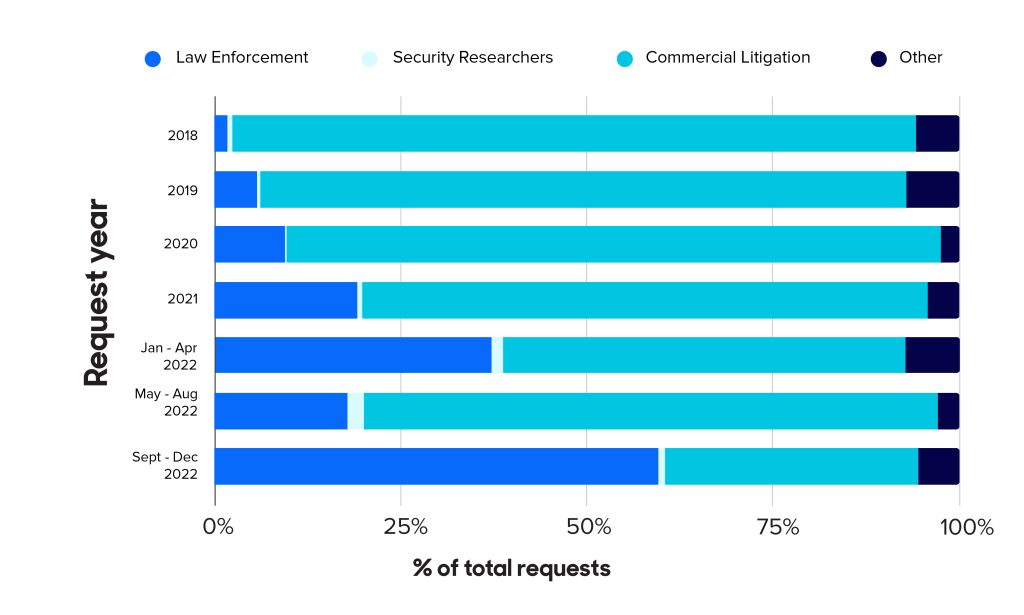
Requests by category (total)
Although law enforcement was the largest requestor category in the last part of 2022, the system is, overall, still most used by commercial litigation requestors. That said, we note that in 2022 LEA made more requests than ever before, while commercial litigation requests for 2022 were lower than any previous year, so we’ve shared a new chart that compares the number of LEA and commercial litigation requests each year since TACO began operating.
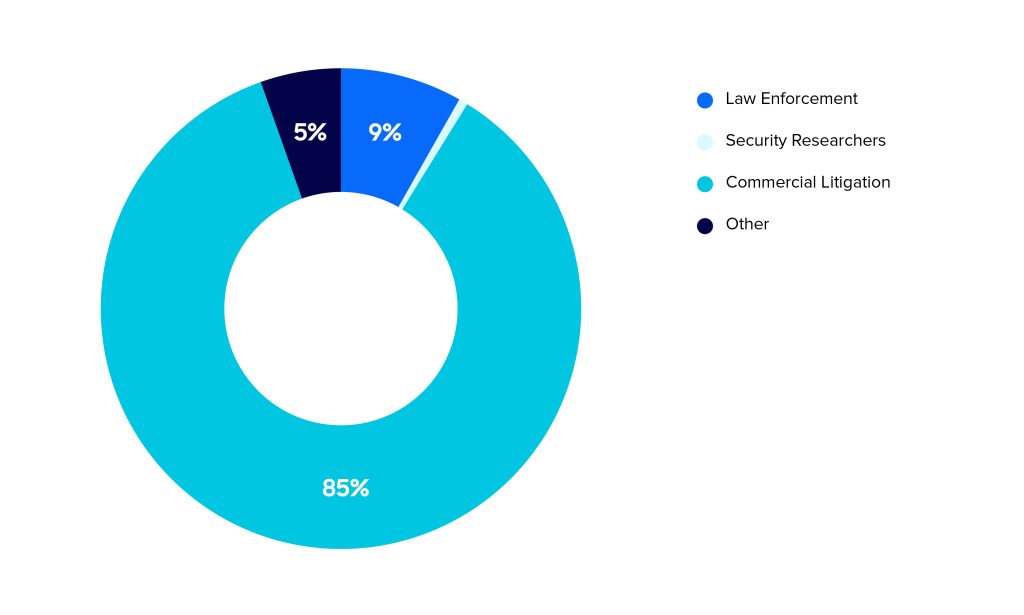
Law Enforcement and Commercial Litigation (total over time)
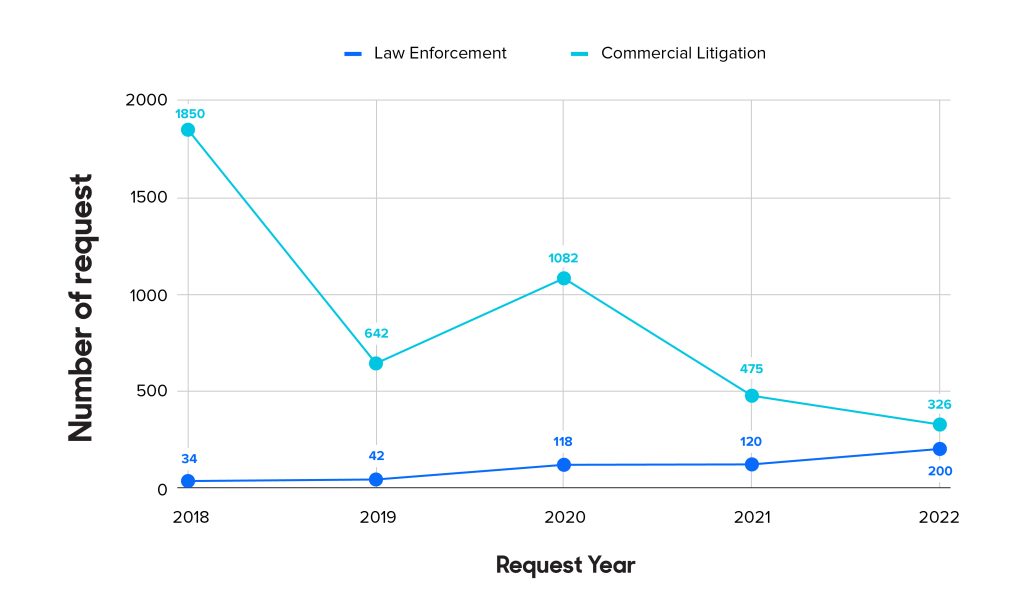
Abandoned requests by requestor category
The rate of abandoned requests increased for both the Law Enforcement and Commercial Litigation categories but remained steady for Security Researcher (a consistently low number of requests in that category, all of which are abandoned) and “Other.” It’s worth highlighting that abandoned LEA requests went up nearly 10% compared to the previous reporting period. We attribute this to an increase in requests from extra-jurisdictional law enforcement agencies who submit incomplete requests in languages other than English and do not respond or provide more information when we ask them to submit the standard set of required information.

Total requests over time
The second half of 2022 remained fairly quiet in terms of TACO requests. We had a spike in July (discussed in our previous post), but after that, requests averaged out at about one per day or 28.5 per month—low even compared to the first half of the year, which averages out to 38 per month.

We also looked at the total number of requests per year, which is lower this year than ever.
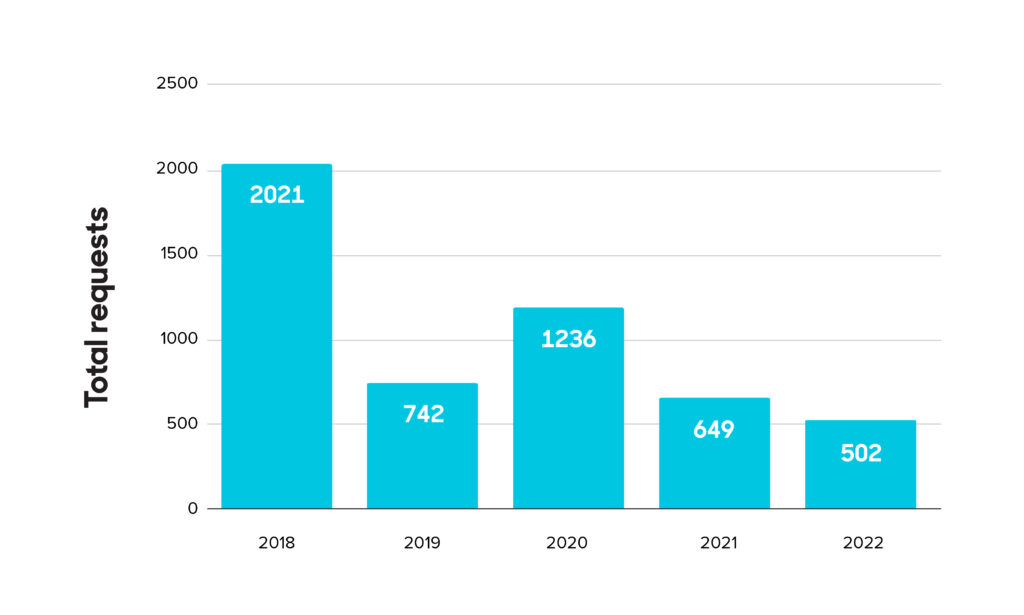
We look forward to continuing to track TACO platform use and reporting the current landscape of request and response data ahead of each ICANN meeting.
To read our past Tiered Access blog posts, please see:
- OpenSRS’ Tiered Access Directory: a Look at the Numbers (May 2018 – mid-February 2019)
- Tiered Access Data Disclosure Update (mid-February – mid-October 2019)
- Privacy and Lawful Access to Personal Data at Tucows (mid-October 2019 – end of February 2020)
- Whois History and Updated Tiered Access Statistics (March – end of August 2020)
- Tiered Access request review process and updated statistics (September 2020 – end of August 2021)
- Tiered Access update: refreshed statistics and law enforcement processes (August – December 2021)
- Tiered Access update: registration data accuracy, and updated statistics (January – April 2022)
- Tiered Access update and thoughts on due process (May – August 2022)
